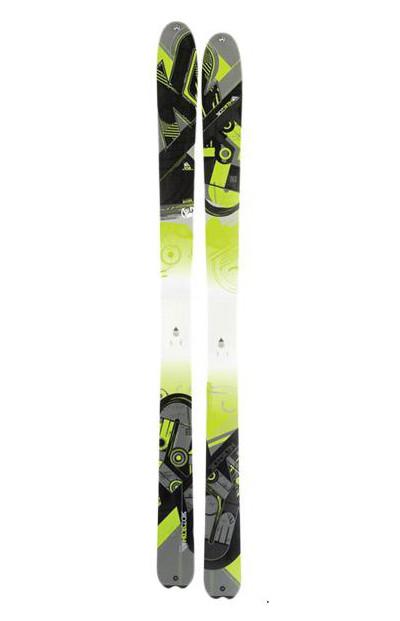
Detune new skis free#
This helps keep edges smoothly sharp, and free of nicks, rust, raggedness and roughness. Compared to personal hygiene, it's somewhat akin to brushing your teeth. Dulling, on the other hand, is more like performing a lobotomy. It's usually done on new skis or boards with a file and/or deburring stone to intentionally dull (or radically bevel) base edges at the very tip and tail where skis and boards lift up out of the snow. Edges here curve dramatically in toward each other, and should be addressed so they don't unexpectedly engage in bump troughs, ruts, crusty snow or other funky condition to revector your planned line of travel downhill off in some new, wild and unanticipated direction.Yikes! Detuning refers to the subtle "massaging" of an edge's sharpness or base bevel near tips and tails to intentionally adjust performance of a ski or board.
Detune new skis plus#
On old traditional skis, detuning behind the contact points made a skis less grabby and "hooky" for easier control.but detuning a shaped ski can make the ski more "nervous" due to shortening the effective running surface, plus the skis won't initiate turns as desired due to the decreased radius and running surface. So for shaped skis find the contact point of the tip and tail (you can do this by placing the ski on a flat surface and marking the sidewall at the points that the ski contacts the flat surface) and detune from contact point forward on the tip and contact point backward on the tail. Maintaining sharp smooth edges on alpine skis and snowboards is an important ingredient of good performance. It ensures better grip to carve turns that provide manueverability and speed control, plus can help deliver greater glide speed for racers as well. Assuming your base and side edges have been beveled to your satisfaction beforehand, here are steps you can take to keep them in top condition.Įdges get dulled to some degree every time you ride, and occasionally experience other damage due to snow abrasiveness (especially manmade snow, frozen corn or ice), snow contaminants (dirt, ash, cinders), hard objects (rocks, metal stakes, etc.) or by accidentally slapping or scissoring tips together in a turn or off-balance recovery. The extent of this damage ranges from major (bent or broken edges…ouch!), to moderate rock nicks or dings, to minor dulling, small scratches or vertical edge burrs. If edge damage is major (bent or broken), seek a good repair shop for help…unless you’re gifted with great surgical skills. If the damage is moderate (rock nicks or dings), you'll first need to remove any ragged and glazed areas where edges have been “work-hardened” by the pressure and heat of impact, and which is subsequently too hard to cut with a file.

Stones are the best tools to accomplish this task, since files are better suited for initially cutting and establishing side and base bevel angles.


 0 kommentar(er)
0 kommentar(er)
